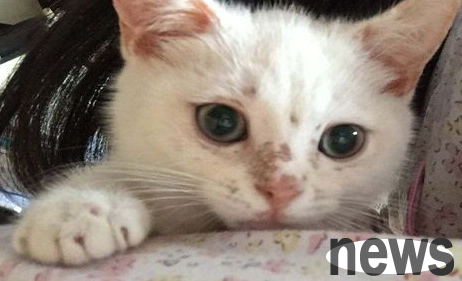Ringworm is caused by fungi. Fungi have several different forms, and they can all infect people or pets. Therefore, this is a comorbid disease between people and pets. In public health, the prevention and treatment of ringworm is also of great significance. Every owner should have some understanding of the symptoms, transmission methods and treatment methods of phytonosis.

Ringworm is a common skin disease caused by mold infection. It is highly contagious and cats of all sizes may get sick. The growth and reproduction of mold in the epidermis leads to the occurrence of ringworm. Molds are prone to growth in warm and humid environments, so tinea is often found in humid and hot environments in summer. A group of small red papules and small water scars appear on the skin, gradually developing and expanding into an annular shape, with needle-sized papules, water scars and scales around it, and then developing to form a multi-ring or map shape.

Typhoids are transmitted to healthy cats by direct contact by diseased cats. Fungal spores can be found in an infected animal, or in its combing tools, nests, places it has been visited, etc. Fortunately, most adult cats are resistant to phytonus and will not develop due to infection. Cats under one year old are easily infected, and cats with low immunity or excessive use of steroids can make cats susceptible to ringworm.
Ringworm can cause infection to cat's skin, and the degree of this infection is related to the site of the disease and the length of the disease. The most common condition is a small, round, hair-lost area with scaly skin in the center and pustules often appear. This infected piece of skin may initially be just a small dot and then expand, and it may feel uncomfortable and itchy due to irritation. Ringworm often occurs on the head, ears and tail. In some cases, ringworm is not just a round shape, it can spread throughout the face and nose, looking like an autoimmune disease or other common skin diseases. This disease can occasionally spread throughout the body, causing large areas of scaly or oily skin. In rare cases, chronic ear infections are also caused by phytonus.
Tyrannosia can be diagnosed in several different ways. One more popular but not completely accurate method is to use a special black light examination called forest lamps. When illuminated by forest lamps, several types of phytonia will fluoresce; however, it is estimated that up to half of M. canis will not fluoresce under forest lamps; and a healthy animal may also carry spores on its fur, but it is not infected. Another method is to collect some hairs around the skin of the disease and examine them under a microscope. About 40% to 70% of phyton infections can be diagnosed using this method. The best and most accurate method is to collect dander and hard scabs that fall off the skin for fungal culture. There is a specially designed fungal culture method to confirm fungal infection. This routine training is easy for veterinarians in your area.
The most common method for treating ringworm is to bask in more sunshine and strengthen nutrition, which can often heal itself. Moisture is a favorite of fungi, so keep the environment dry. You must dry your hair thoroughly after taking a shower. Pay special attention to the soles of the feet and behind the ears. This is usually the hardest hit area for ringworm. If the water is overturned at home, it should be cleaned in time. You can also apply Pittefen topically, and it will be cured after 2 weeks.
